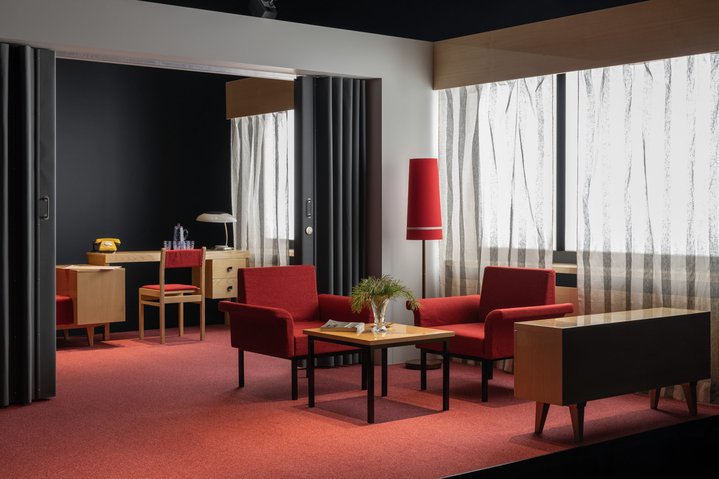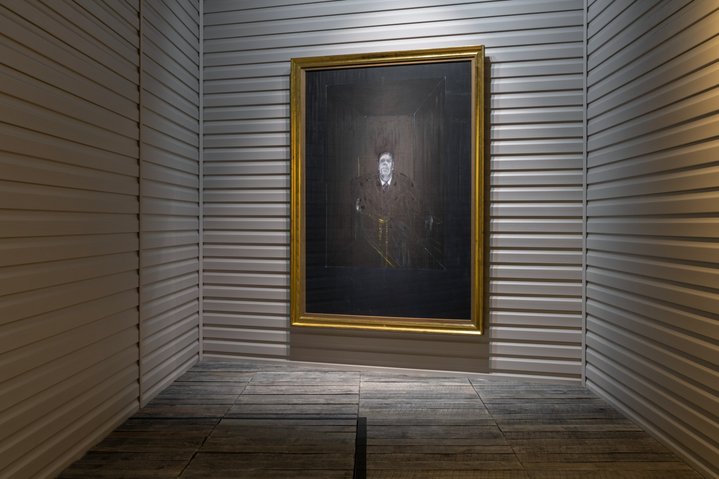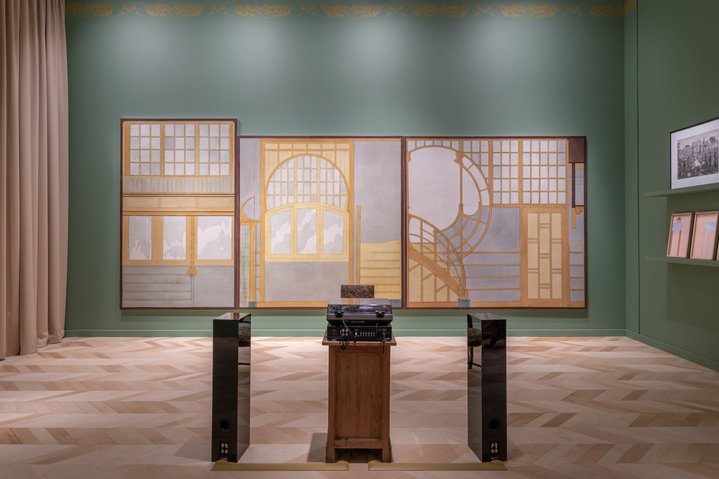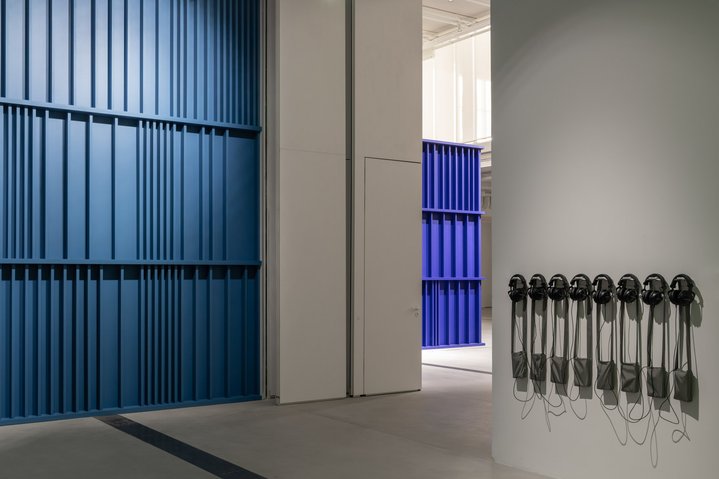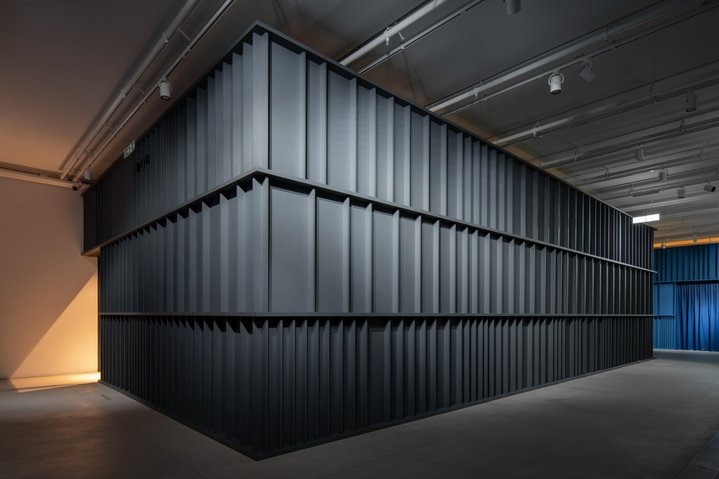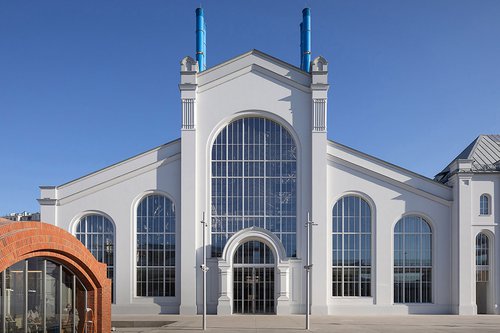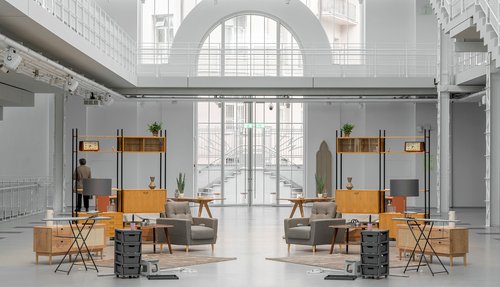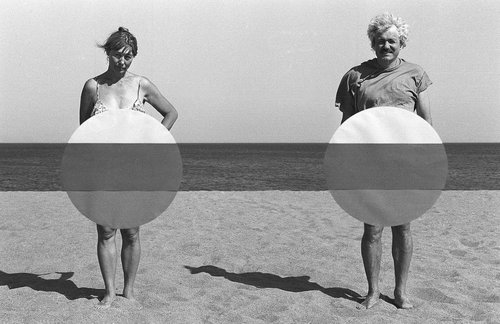Tuning-3. Society for Private Musical Performances, VII Vagner. Photo: Daniil Annenkov © GES-2 House of Culture
A new exhibition at GES-2 in Moscow combines art and music
Synaesthetic environments where you can interact with art as a flow of sensual impressions and human emotion is behind the success of ‘Tuning 3’, which has recently opened at GES-2, a former power station revamped by Renzo Piano.
It was the Russian avant-garde at the beginning of the 20th century, in particular Vassily Kandinsky (1866–1944), Mikhail Matyushin (1861–1944) and their followers who first showed us how to see sound and hear colour. Today object-oriented art operates on a similar level of transference through shifts in accent where the real object itself actually eludes us. We understand what the artist is saying through our sensual contact with the environment in which the object is placed. In a holistic, spatial environment we literally can see sounds and hear pictures.
Russian set designer Aleksandr Barmenkov and the curators of the ‘Tuning 3’ exhibition at GES-2 have created seven individually staged pavilions in which music and objects co-exist. Each pavilion is dedicated to a different composer. And while the first two programmes in the Tuning series were about contemporary music, in the current and third iteration, the focus is on music steeped in history with a rich biography, from the Middle Ages to the post-war Modernism of Dmitri Shostakovich.
Minimalist chic is an overture to the exhibitions created in separate pavilions in the GES-2 hangar space, each of which evokes a stage set for a play or film. There is the Shostakovich hall by artist Kirill Gluschenko (b. 1983) which has been designed like a 70s era hotel room. The furniture was sourced from a catalogue, there are Soviet magazines on the coffee table and a pack of cigarettes near the table lamp, all bathed in a dense white, cinematic light which streams in from the window. It was in a similar setting in 1971 that Shostakovich wrote his final, 15th Symphony. Music is belted out from loudspeakers on the ceiling in a collage vibe: there are musical quotations from the great classics juxtaposed with the wooden tap-tapping of a xylophone and tam-tam. All this together creates a tense atmosphere evocative of a murder-mystery play. Indeed David Lynch wrote the screenplay for the cult psychedelic horror film ‘Blue Velvet’ to the sound of this symphony. The interior would be rather ordinary if it were not for the music piped overhead which creates a mood of impending disaster or foretells the breakdown of whoever lives there. With this stage direction, everything in the space assumes equal importance and it is the interaction between the viewer and the acoustics of the space that is central to its meaning. Contemporary art theorist Nicolas Bourriaud names this kind of communication “relational aesthetics”.
In the Beethoven hall there is a recording studio with console tables and a vintage tape recorder. The window separating the performer and the director is transformed into a chroma key. The room is decorated with collages by Russian artists from the unofficial circles of the USSR, such as Francisco Infante-Arana (b. 1943), Oleg Vassiliev (1931–2013), and Ivan Chuikov (1935–2020). Through these collages you can experience a journey from the birth of romantic emotion in music and painting to Conceptualism’s contemporary archival practices. The very experience of Beethoven in the technical modules of a recording studio erases the patina of a museum and turns the composer into a contemporary interlocutor.
In some rooms loudspeakers are installed like a forest of microphones, such as ‘Tristan und Isolde’ in Wagner's pavilion, which recalls museum interventions of famous sound artists such as Janet Cardiff and Susan Phillips. Some of the spaces have even been turned into total installations. For example, the schizophrenic world of Robert Schumann, who suffered from auditory hallucinations, has been framed by Russian artist Irina Korina (b. 1977) with a wholesale market pavilion turned inside out. The sliding walls are made of worn stainless steel on one of which there hangs a psychopathic portrait by Francis Bacon (1909–1992). And the floor boards have been turned into piano keys. They are rickety and when you step on them they spring downwards, the thud resonating in your mind. Schumann's music is drowned out by such hallucinogenic intrusions.
Finally, executed with simplicity – and perhaps one of the best examples of interactive synaesthesia - is the pavilion of the medieval saint Hildegard of Bingen. Hildegard is a 12th century saint who created spiritual chants from her experiences of mystical visions which she described as waves of light. There is spiritual, gothic music playing on headphones as you stroll through the corridors of a strange dormitory, the wallpaper is decorated with a rather aggressive looking foliage. Irina Korina, who created these hotel corridors, envisaged the hypnotic effect of transforming a kind of banal squalor into a magical world through the music of Hildegarde of Bingen. The leafy ornamentation of the wallpaper and the light bulbs of a worn-down post-Soviet corridor are quickly transformed into the columns and altars of a Gothic cathedral illuminated by a mysterious light.






